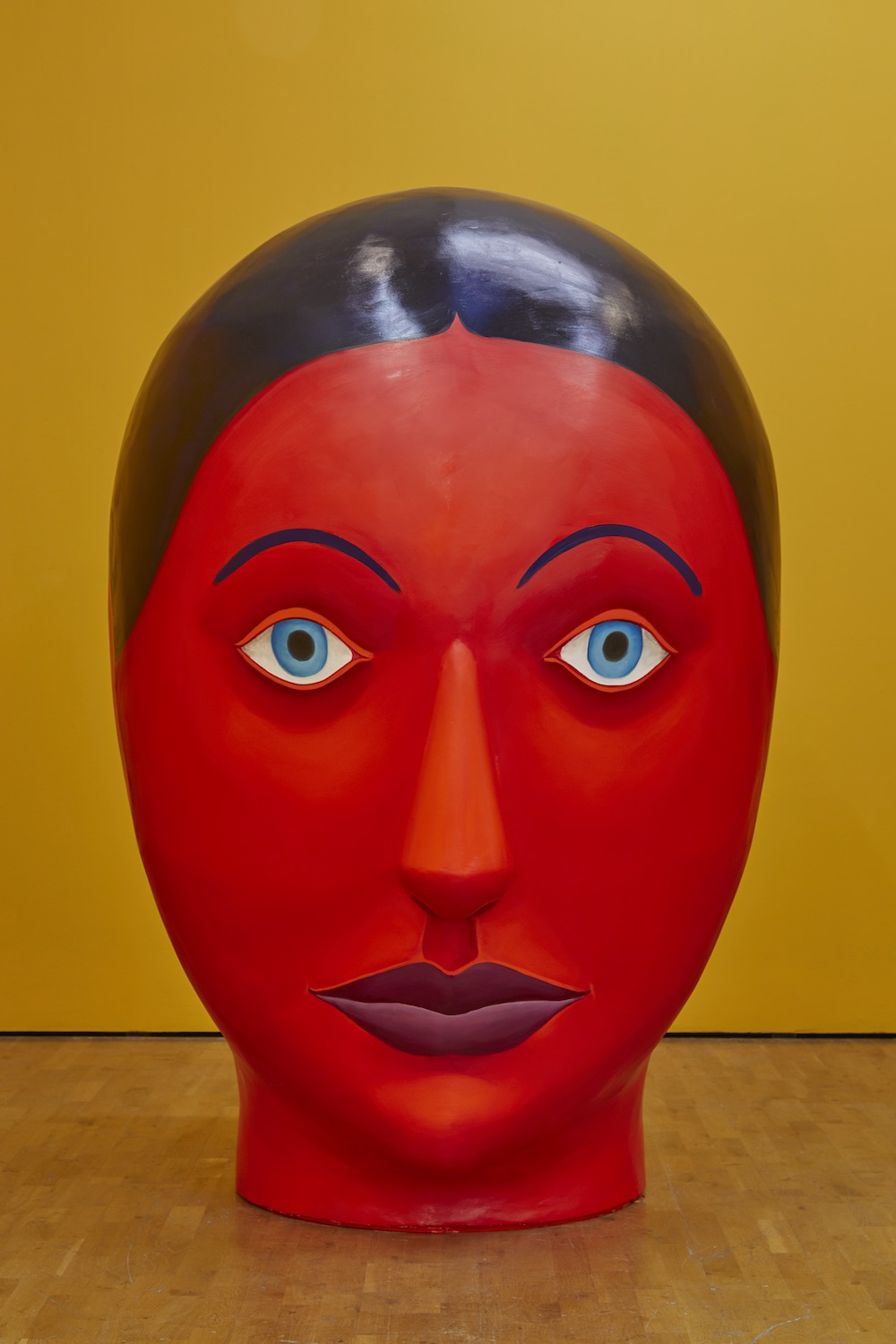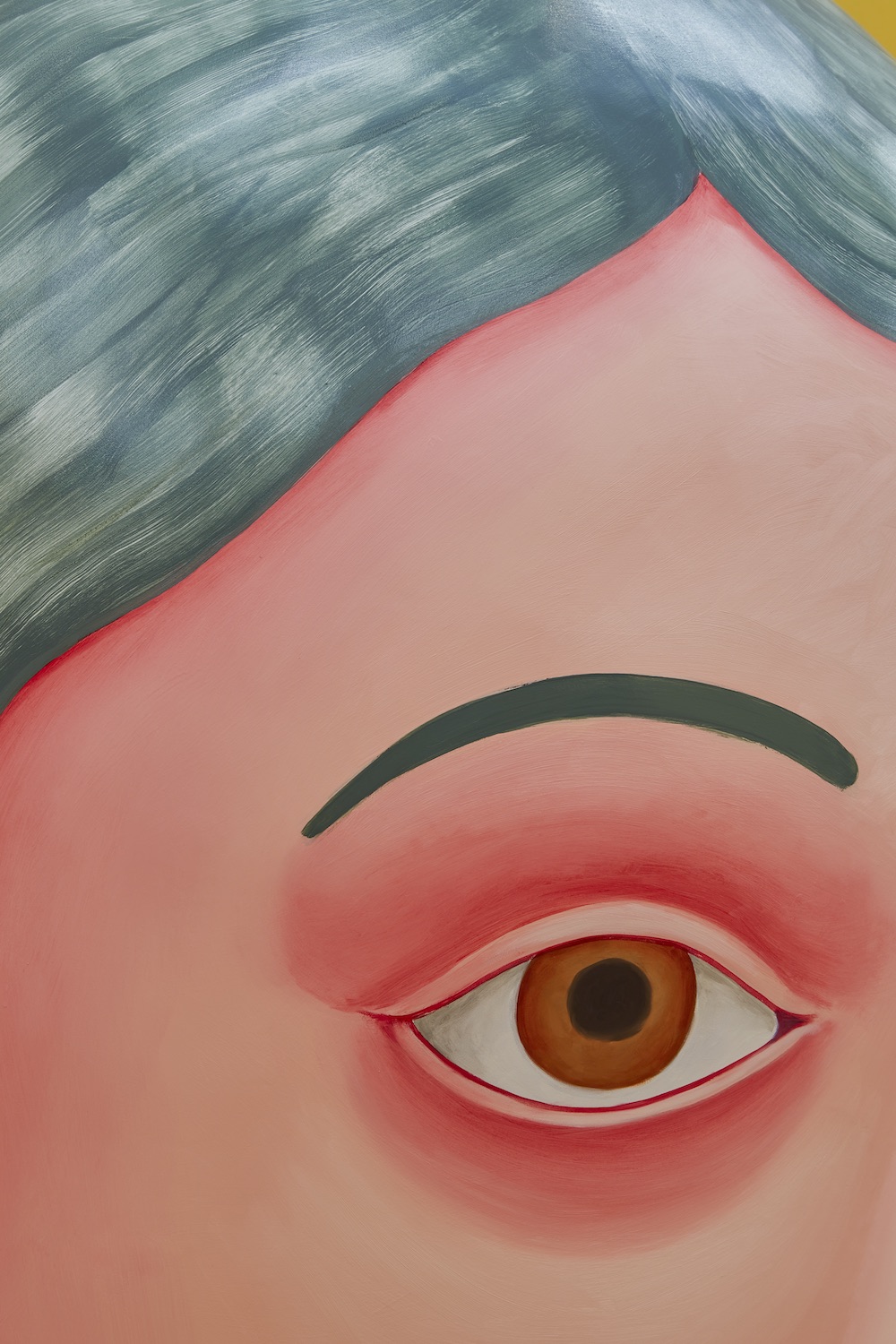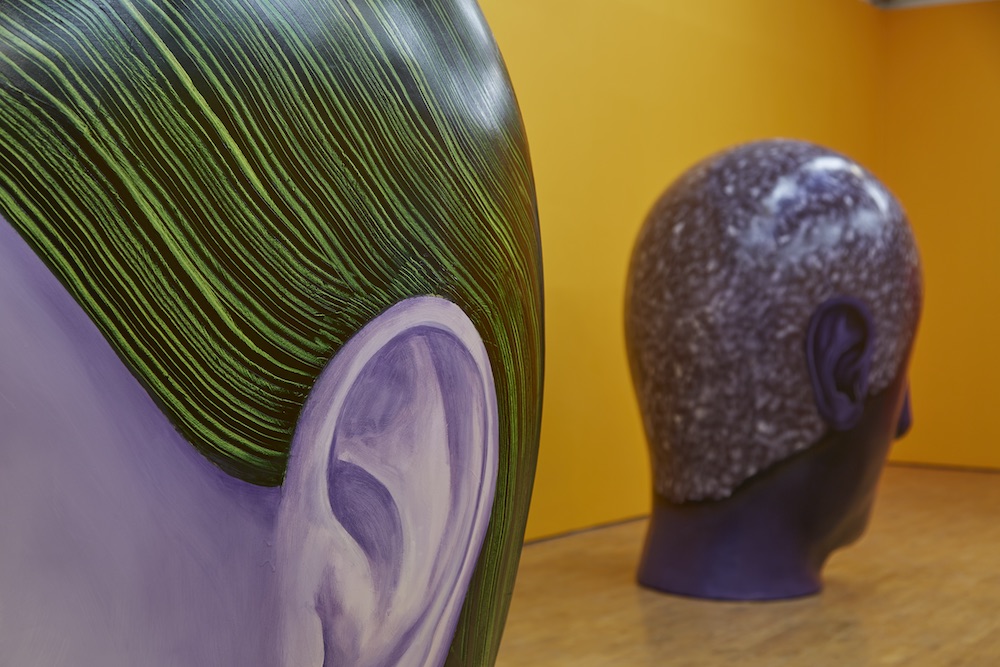-

All images: Nicolas Party, Speakers, 2017.
Courtesy the artist and The Modern Institute/Tony Webster Ltd, Glasgow. Photo by Ben Westoby
“I like the creation of a soup experience,” Nicholas Party says proudly. The Swiss-born artist is commenting on his new exhibition Speakers that opened at Modern Art Oxford last week. Speakers includes five gigantic heads painted in distinct combinations of bright colours that look out at the surrounding area without facing each other. The installation is exhibited in a large room with yellow-ochre painted walls and soft background music taken primarily from the archive of Modern Art Oxford. Party is renowned for portraits of flat, fictional characters painted in exotic colours and shapes that make his work immediately recognizable. This latest exhibition, however, has sprung from novel experimentations that take Party’s practise in a different direction—while retaining some key elements.
“It is really a mix between something very high-tech and something very handmade.”
The exhibition is deeply rooted in the history of the old town of Oxford and inspired by a set of sculptures known as the Heads of the Emperors, located on the central Broad Street and mounted on railings of the Sheldonian Theatre. Built next to the Bodleian Library in 1664, the Sheldonian Theatre is still the principal hall of the University of Oxford, used to celebrate the most important occasions—such as the Encaenia ceremony—and to host meetings of the congregation. In the eyes of the artist, the ancient heads adorning the site of the Sheldonian Theatre overwhelmingly symbolize the masculine energy that permeates the city and university. Party’s heads are notably female.

“For a while I wanted to paint heads,” he says. “Almost all of the sculptures from antiquity were painted, and there is something interesting about paint being applied to a sculptural surface. With this work I wanted to start with a simple head shape, something between a doll and an antique carved head, or a millinery dummy, which are really quite beautiful, and then paint one of my portraits into those three-dimensional surface.”
In this new body of work, there is a purposeful intention to combine opposites. Party says of his exhibition that “it is really a mix between something very high-tech and something very handmade. I like that there are these two aspects to the work”. The process of creating these sculptures entails several manufacturing phases that combine innovative techniques with traditional craftsmanship. The models are designed using digitalized, three-dimensional images that are subsequently cast with a mixed structure of metal and wood, covered with mesh armature. Then the heads are hand-plastered and painted by the artist himself in vivid acrylic and oil colours on site, a few days before the opening of the exhibition to retain the vivacity of freshly painted colours as much as possible. “The manner of painting is quite cold and mechanical,” the artist says. “There is not a great deal of expression in the way the paint is applied to the heads.”

Speakers is suggestive of a novel phase in the artist’s production that draws inspiration from the performance and collaborative aspects of his earlier career as a graffiti artist. The act of painting on site a few days before the opening is an act of performance in itself, enriched by the use of soundscape music that helps to emphasize the sensations prompted by artworks. In the words of the artist, the use of music is an integral part of the exhibition. “I am a huge fan of music, and I like this idea of creating a space of theatre and performance. It means that the visitors’ experience of the exhibition becomes a little more physical and involving than the simple interaction of looking at a painting.” As the artist remarks, the sound element helps to unify the distinct themes intrinsic to the works. “For me it was very important to have the soundscape to make Speakers more alive. If you put music in any show it changes dramatically. Music has such a powerful emotional effect. In this particular context I felt it was important to add this emotional layer to bring the painted sculptures together. I like this idea of hearing a soup of sounds from a variety of sources. I like this creation of a soup experience”.

Speakers projects an image of Oxford that is distant from the masculine energy in the architecture and academic tradition of the city. This exhibition instead proposes a contemplative image of Oxford, projected into a future dimension where the female component is central to the social project. The artist is explicit about this message. “When we decided to do the heads,” he says, “there was this desire to create a form of storytelling through sounds and music that would allude to the various contexts of the histories of women in Oxford.” Time will tell whether history will endorse the artist’s vision of Oxford as a more balanced and mixed society.





